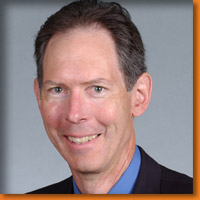Thursday, 4:30–5:30 pm
25 February 2010
School of Aquatic & Fishery Sciences
102 Fishery Sciences (auditorium)
1122 NE Boat Street (map)
University of Washington
Reception follows each talk
 Michael Rubino
Michael Rubino
Manager, NOAA Aquaculture Program
Is aquaculture a sustainable use of the sea?
Abstract
We stand at a critical juncture in the development of marine aquaculture in the United States. Environmental and food safety concerns and the economic ramifications of domestic aquaculture are the subject of much debate and widely differing views. How do we find a sensible balance?
For example, how can marine aquaculture in the United States deliver on its promise and substantially increase seafood production and U.S. jobs in a way that is economically, environmentally, and socially sustainable? Will increased seafood production put additional strains on ocean resources and compete with wild caught fisheries, or will it be the sustainable solution to closing the seafood gap? Can domestic aquaculture help improve the safety and security of our seafood supply, maintain working waterfronts and seafood jobs in coastal communities, and restore the health of marine ecosystems? The answers to these questions are not simple.
Aquaculture already supplies half of the world seafood and the United Nations Food and Agriculture Organization projects that most of the future increase in seafood supply must come from aquaculture. The U.S. is a major consumer of aquaculture products – we import 84% of our seafood and half of that is from aquaculture – yet we are a minor producer. The existing small and medium scale marine aquaculture operations in the U.S. demonstrate many of the elements of sustainable production, but such operations feed relatively few people. U.S. marine aquaculture supplies less than 1.5% of the U.S. seafood supply.
From a national perspective, a compelling case can be made for growing more seafood in the United States. Aquaculture, as a complement to wild harvest fisheries, can help meet the growing demand for seafood and help rebuild our wild fish stocks. Domestic aquaculture is also critical to maintaining an infrastructure in coastal communities to support both commercial fisheries and aquaculture and all of the jobs associated with the seafood industry. The potential synergies – rather than competition – among those engaged in commercial and recreational fisheries, marine aquaculture, seafood processing, and marketing are the keys to maintaining resource-dependent coastal communities and to ensuring a lead role for the United States in the global seafood market.
Bio
Dr. Michael Rubino is the manager of the National Oceanic and Atmospheric Administration's Aquaculture Program. He joined NOAA in late 2004 to lead NOAA’s renewed commitment to marine aquaculture. Under his leadership, the NOAA has been at the forefront of a national discussion on the role of sustainable aquaculture in the U.S. seafood supply and as a viable technology for supporting and restoring valuable commercial and recreational fisheries and habitat. He is currently coordinating the development of a new national policy for marine aquaculture.
Prior to coming to NOAA, Dr. Rubino was the manager for New Funds Development for the World Bank's Carbon Finance Group. In the 1990s, Dr. Rubino was at the International Finance Corporation, a private sector affiliate of the World Bank, where he developed renewable energy and biodiversity investment funds. Earlier he was the CEO of an aquaculture R&D company and a partner in a shrimp farm in South Carolina. Dr. Rubino also served as vice-chairman of the State of Maryland's Aquaculture Advisory Committee. He holds a Ph.D. in Natural Resources from the University of Michigan.
Video
Readings
- Diana, James S. 2009. “Aquaculture Production and Biodiversity Conservation.” Bioscience Vol 59, No 1, pp 27-38.
- Nash, C.E. 2004. “Achieving Policy Objectives to Increase the Value of the Seafood Industry in the United States: the Technical Feasibility and Associated Constraints.” Food Policy Vol 29, pp 621-641.
- Lubchenco, Jane. 2003. “The Blue Revolution: A Global Ecological Perspective.” Guest Editorial, World Aquaculture, December 2003.